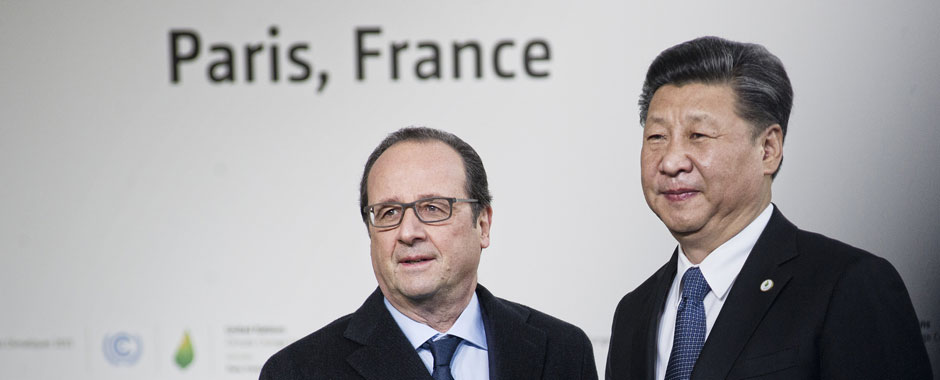President Donald Trump’s decision to withdraw the United States from the Paris climate agreement has sparked off another round of intense global discussion on China’s potential as a global leader on climate. Since last week, there appears to be a widespread desire for China and Europe to forge a stronger alliance to lead global efforts to reduce carbon emissions. Even the US Energy Secretary Rick Perry himself invited China to “step in and attempt to take the mantle away” from the US.
But is China ready to meet the expectations of the international community and fill the gap left by the US?
What is climate leadership?
It really depends on how leadership is defined and understood. In a narrow sense, climate leadership is a moral responsibility for a strong nation to dedicate itself to supporting the common human task of saving the planet and our future generations within the current governance systems.
In that sense, China has already shown leadership in the past few rounds of international climate negotiations, as a solid defender of both the IPCC’s scientific conclusions and the current UN-led climate regime. China also acted as a bridge between developed and developing countries to reach the deal in Paris. Its political and economic influence, together with the sheer size of its contribution to global carbon emissions, has determined the country’s crucial role in the global effort to combat climate change.
In a broader sense, however, leaders in climate change should make significant commitments to cut their domestic emissions, while also providing much-needed financial assistance to countries most affected by the changing climate. In other words, a strong and leading state not only does well domestically, but also supports others, so that its leadership status is legitimised around the world.
But it is unrealistic to assume that China would make further commitments on top of its current pledge of emission reductions under the Paris Agreement, or provide additional financing for the global South, to an extent that could match what the US once promised.
China’s priorities
Many recent studies on China’s domestic climate policies indicate that the government’s real focus is not really on cutting carbon emissions per se, but rather on tackling the severe air pollution choking its big cities and the rampant overcapacities of most of its energy-intensive industries. Greenhouse gas reductions are a ‘bundled interest’ or side benefit.
Yet, like many other issues in China, international commitments may help to overcome the domestic political obstacles for much-needed reforms or positive policy changes. In the case of carbon emissions, China’s international pledge to peak its emissions by 2030 would certainly put pressure on the domestic interest groups around highly inefficient heavy industries or pro-development local officers.
China’s current National Determined Contribution (NDC) under the Paris Agreement already sets out a set of comprehensive quantitative targets, including a 20% renewable energy deployment rate in the energy mix, a 60-65% cut in carbon intensity by 2030 compared to 2005 levels, and an additional 4.5 billion cubic meters of forest stock volume to act as a carbon sink. These targets could be difficult to push further, because of various political, economic and social constraints.
Funding and global leadership
As for climate funding, China’s promise to establish a South-South climate cooperation fund with 20 billion RMB yuan (3.1 billion USD) is a crucial signal as the first voluntary commitment from the rising powers outside the current north-south climate finance arrangement.
Yet Chinese funding is more likely to serve as a complementary rather than a decisive role, and will hardly replace or fill the gap left by the US withdrawal. Even if China wanted to offer more international climate assistance, it might not arrive through existing arrangements, but would be more probably linked to newly-established Chinese-led institutions such as the Asian Infrastructure Investment Bank (AIIB) or the BRICS Bank, or its grand regional initiatives like the Belt and Road Initiative (also known as One Belt, One Road).
This means that encouraging and legitimising China’s leadership role on climate may intricately reinforce its ambitions on global trade and economy. China’s leadership role, or otherwise, will depend on its ability to reshape the institutional structure of global climate and trade regimes. How much room it is given to do so will be crucial in determining whether China will truly be a global climate leader.
